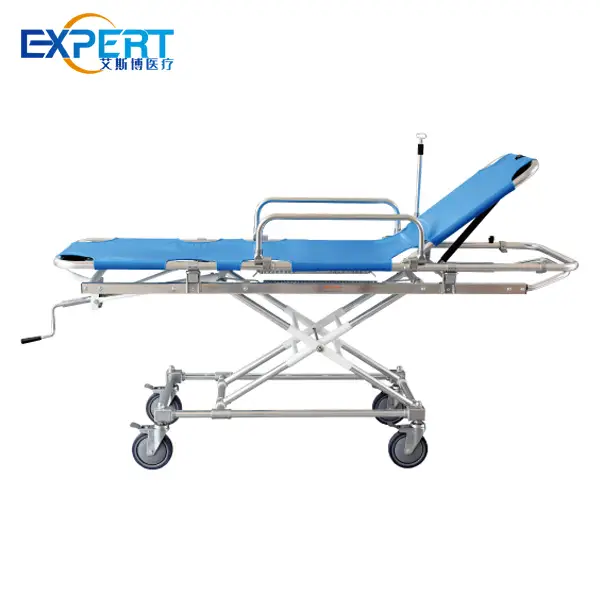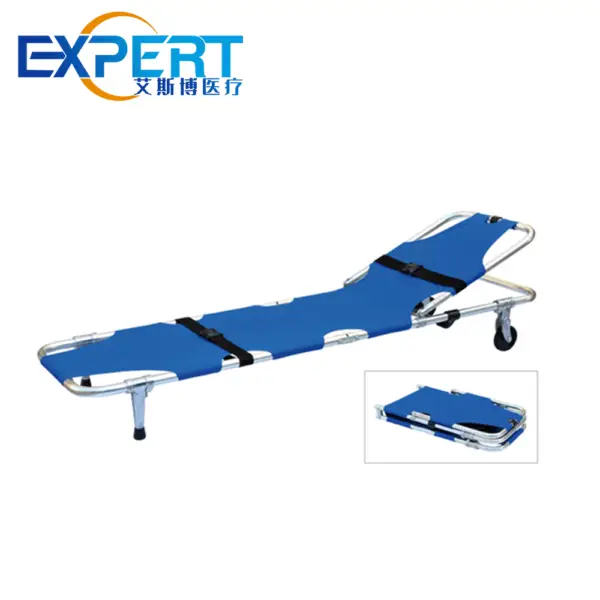Die Anschrift
304 Nordkardinal St.
Dorchester Center, MA 02124
Arbeitsstunden
Montag bis Freitag: 7:00 - 19:00
Wochenende: 10:00 - 17:00

In Krisenzeiten kann die Wirksamkeit medizinischer Geräte lebenswichtig sein. Medizinische Fahrtragen gehören zu den wichtigsten Hilfsmitteln im Notfalleinsatz. Diese vielseitigen Geräte spielen eine entscheidende Rolle für den sicheren und effizienten Patiententransport innerhalb medizinischer Einrichtungen und in Notfällen wie Naturkatastrophen, Massenanfällen und Pandemien. Dieser Blogbeitrag untersucht die Bedeutung medizinischer Fahrtragen in Krisenszenarien, ihre Funktionalitäten und ihre entscheidende Rolle bei der Lebensrettung.
During crises, such as earthquakes or terrorist attacks, the swift evacuation of injured individuals is paramount. Medical stretcher trolleys provide a means to transport patients quickly and securely from the site of the incident to medical facilities for treatment.
Medical stretcher trolleys are not confined to crisis situations; they are integral to daily healthcare operations. From emergency rooms to surgical suites, these trolleys serve multiple purposes, including patient assessment, treatment, and transportation within healthcare facilities.
Patient comfort and safety are of utmost importance in crisis response scenarios. Medical stretcher trolleys are designed with features such as adjustable height, side rails, and cushioned surfaces to ensure the comfort and safety of patients during transit, reducing the risk of further injury.
Medical stretcher trolleys are constructed from durable materials such as stainless steel or lightweight aluminum to withstand the rigors of emergency situations. Their design includes features such as swivel wheels and brake systems for easy maneuverability in confined spaces and chaotic environments.
In addition to patient comfort, stretcher trolleys are ergonomically designed to minimize strain and fatigue for healthcare professionals involved in patient transport. Adjustable handles and intuitive controls enable efficient navigation through crowded corridors and emergency zones.
During disease outbreaks such as the COVID-19 pandemic, stretcher trolleys play a crucial role in containing the spread of infectious diseases within healthcare facilities. They are utilized for the safe transportation of patients suspected or confirmed to have contagious illnesses, facilitating isolation and minimizing the risk of transmission.
In resource-constrained environments, such as overwhelmed hospitals during a pandemic surge, the efficient use of medical equipment is imperative. stretcher trolleys help optimize resource allocation by streamlining patient flow and maximizing the utilization of available treatment spaces.
Modern medical stretcher trolleys are equipped with technology that allows for seamless integration with health information systems. This enables real-time monitoring of patient vital signs, electronic documentation, and communication with healthcare teams, enhancing coordination and decision-making during crisis response efforts.
Some advanced stretcher trolleys are equipped with telemedicine capabilities, allowing remote consultation with specialists and triage support. This is particularly valuable in crisis situations where access to specialized care may be limited or when rapid decision-making is required to prioritize patient treatment.

| Besonderheit | Beschreibung |
|---|---|
| Verstellbare Höhe | Allows for customization according to the height of healthcare professionals and patient needs |
| Collapsible Side Rails | Enhances patient safety during transport and provides easy access for medical procedures |
| Swivel Wheels | Enables smooth maneuverability, especially in crowded or confined spaces |
| Bremssystem | Ensures stability and security when the trolley is stationary |
| Cushioned Surface | Provides comfort for patients and reduces the risk of pressure ulcers during prolonged use |
The role of medical stretcher trolleys in crisis response cannot be overstated. From facilitating rapid patient transport to ensuring the comfort and safety of individuals during emergencies, these versatile devices are indispensable in saving lives. As technology continues to evolve, integrating data-driven solutions and telemedicine capabilities into medical stretcher trolleys will further enhance their effectiveness in crisis situations, ultimately improving patient outcomes and bolstering healthcare resilience.
F: Wie medical stretcher trolleys differ from regular hospital beds?
A: Medical stretcher trolleys are specifically designed for patient transport, featuring features such as adjustable height, collapsible side rails, and maneuverability to navigate tight spaces, unlike traditional hospital beds primarily used for patient rest and recovery.
F: Sind medical stretcher trolleys suitable for transporting critically ill patients?
A: Yes, medical stretcher trolleys are equipped to transport critically ill patients securely. They offer features such as cardiac boards, IV poles, and oxygen cylinder holders to support the needs of patients requiring intensive care during transit.
F: Kann medical stretcher trolleys be customized for specific healthcare facilities?
A: Absolutely, medical stretcher trolleys can be customized to meet the unique requirements of different healthcare settings. Manufacturers offer options for accessories, sizing, and design configurations to tailor trolleys according to facility preferences and workflow needs.
